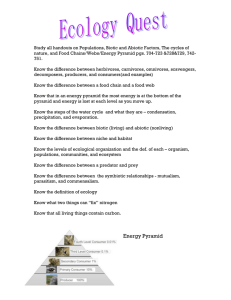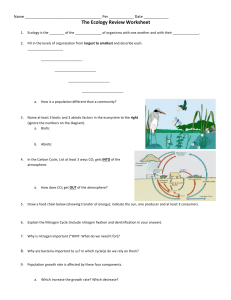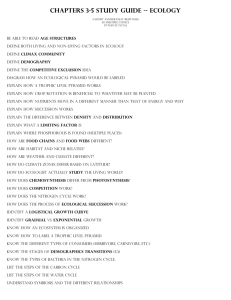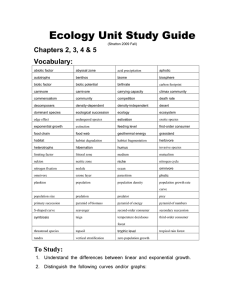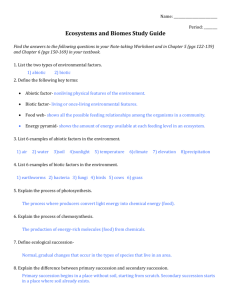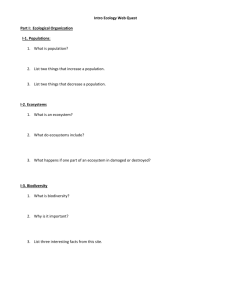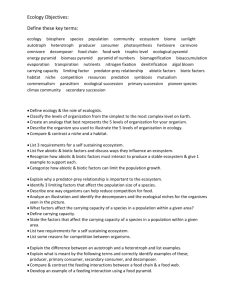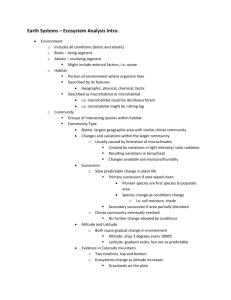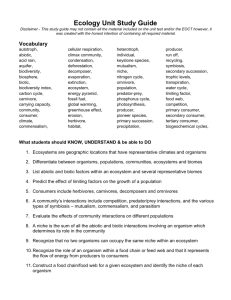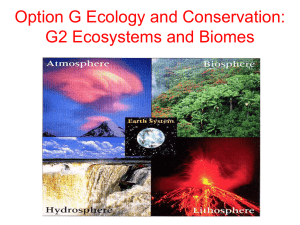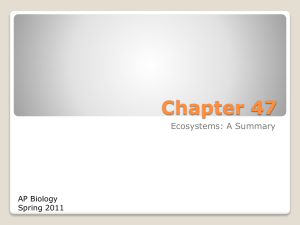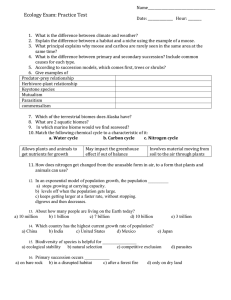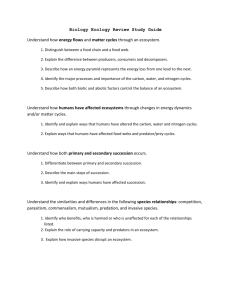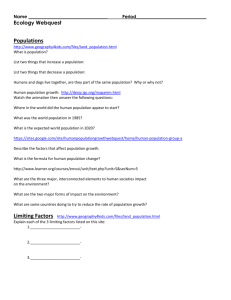TERRESTRIAL ECOLOGY STUDY GUIDE
advertisement
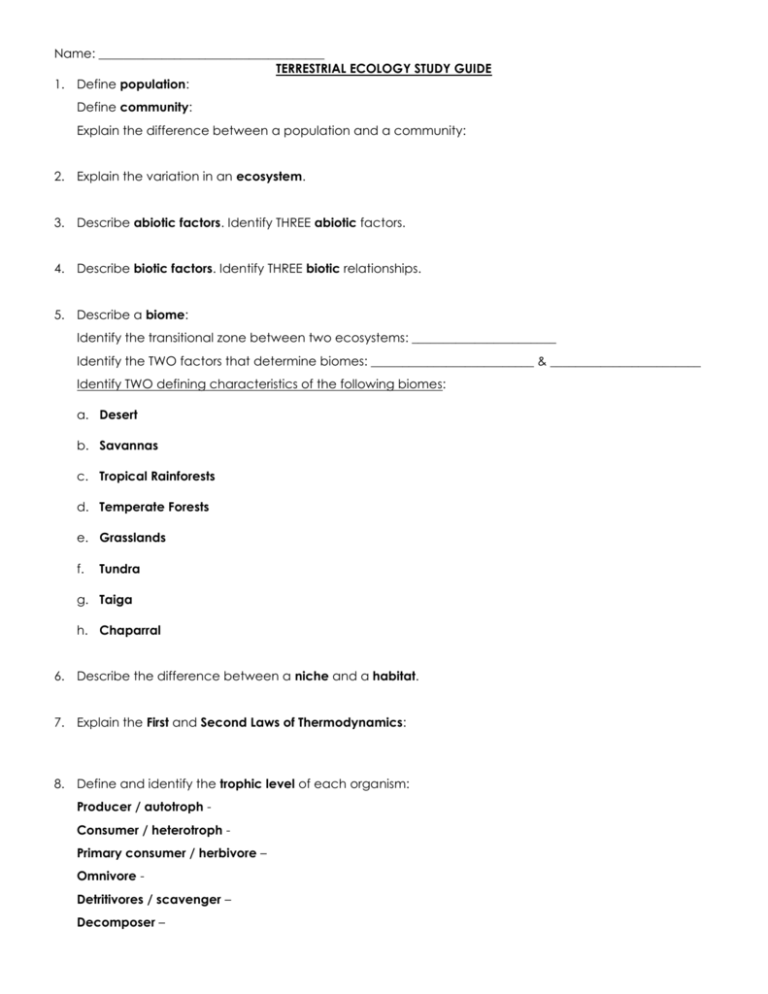
Name: ____________________________________ TERRESTRIAL ECOLOGY STUDY GUIDE 1. Define population: Define community: Explain the difference between a population and a community: 2. Explain the variation in an ecosystem. 3. Describe abiotic factors. Identify THREE abiotic factors. 4. Describe biotic factors. Identify THREE biotic relationships. 5. Describe a biome: Identify the transitional zone between two ecosystems: _______________________ Identify the TWO factors that determine biomes: __________________________ & ________________________ Identify TWO defining characteristics of the following biomes: a. Desert b. Savannas c. Tropical Rainforests d. Temperate Forests e. Grasslands f. Tundra g. Taiga h. Chaparral 6. Describe the difference between a niche and a habitat. 7. Explain the First and Second Laws of Thermodynamics: 8. Define and identify the trophic level of each organism: Producer / autotroph Consumer / heterotroph Primary consumer / herbivore – Omnivore Detritivores / scavenger – Decomposer – Name: ____________________________________ 9. Describe food chains and food webs. 10. Distinguish between gross and net primary productivity: 11. Describe how energy flows through an ecosystem and label the generalized ecological pyramid: 12. Describe the following pyramids: Pyramid of Numbers – Pyramid of Biomass – Pyramid of Energy – 13. Describe the carbon cycle and explain TWO ways humans have affected the carbon cycle: 14. Describe THREE steps in the nitrogen cycle. Identify the largest reservoir for nitrogen: ____________________ a. b. c. Identify how humans intervene in the nitrogen cycle: __________________________________________________ 15. Describe the phosphorous cycle. Does the phosphorous cycle have a gas phase? ________ 16. Describe the sulfur cycle and identify human activities that release large amounts of sulfur: 17. Describe the hydrologic cycle. 18. Define inertia and resilience: 19. Define keystone species and identify THREE examples of keystone species: 20. Explain how species diversity increases stability: 21. Describe ecological succession: _____________________________________________________________________ Climax Community: _________________________________________________________________________________ Primary Succession: _________________________________________________________________________________ Name: ____________________________________ Secondary Succession: ______________________________________________________________________________

